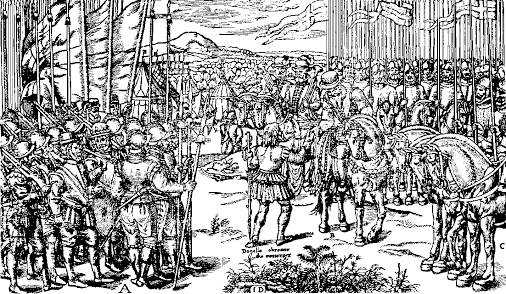Ben Jonson’s Oberon, the Faery Prince
Throughout September, the Daily Classical Music Post celebrates the music of 15th-, 16th-, and 17th-century England.
The English playwright Ben Jonson wrote a number of masques in the early 17th century. Masques, elaborate stage shows often based on mythological or allegorical themes, were especially popular in England, where they were primarily court entertainments. The masque is one of the forms of sung and staged entertainment that is seen as a precursor to opera.
Jonson’s masques were the pinnacle of the form; he and his designer Inigo Jones produced many popular masques with music by top composers of the day. Jones’s stage designs and costumes were unbelievably detailed and really quite over the top.
In 1611, Jonson and Jones collaborated with two musicians, Alfonso Ferrabosco the younger (c. 1575–1628) and Robert Johnson (c. 1583 –1633), on Oberon, the Faery Prince. The masque, with Henry, Prince of Wales, in the lead role, is particularly notable for Jonson’s innovative introduction of sidewings and shutters, which allowed for perspective and scene changes to be utilized in the set. Prince Henry wanted to perform on horseback, but his father, James I, put his foot down.
Ferrabosco the younger, private music tutor to Prince Henry as well as a well-respected viol and lute player, was known for his settings of poetry by Jonson, John Donne, and Thomas Campion, as well as for his collaborations with Jonson on several masques. Jonson wrote “To My Excellent Friend Alfonso Ferrabosco” for him.
Robert Johnson was lutentist to Prince Henry, and not only composed music for Jonson’s masques but also provided music for Shakespeare’s plays. Johnson's are the only settings for The Tempest and other plays known to have been performed in the original productions.
My classical music post for today is Ben Jonson’s Oberon, the Faery Prince.





Comments
Post a Comment